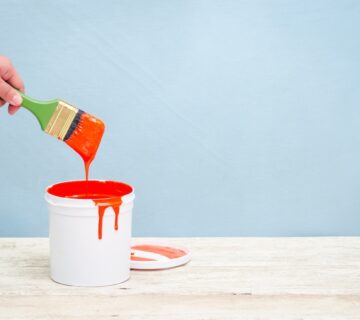Removing paint from historic homes is a delicate task. The process not only requires a gentle hand to preserve the underlying structures but also a deep understanding of the materials and techniques suitable for such venerable buildings. In this blog, we’ll explore safe and effective methods for removing paint from historic homes, ensuring the preservation of their timeless charm. It’s a balance between maintaining the integrity of the building and achieving the desired aesthetic outcome.
Understanding the Significance of Historic Surfaces
Before beginning any paint removal project on a historic home, it’s crucial to understand the value of the original surfaces. These surfaces are part of the home’s character and history, and preserving them is essential. Any alterations to these surfaces can potentially change the historical narrative and physical integrity of the home. Therefore, it’s important to approach paint removal with reverence and care.
Choosing the Right Method
There are several methods to consider when removing paint from historic homes, and choosing the right one depends on the surface material and the paint type.
- Chemical Strippers: These are often used for intricate woodwork. Look for gentle, eco-friendly options that are less harsh on the wood and the environment. They should be applied with patience and care to protect the underlying materials.
- Heat Guns: A heat gun can be effective, but it requires careful handling to avoid scorching the wood or causing fire hazards. It’s also vital to ensure the heat is applied evenly and for the correct duration to avoid any potential damage.
- Infrared Paint Removers: This is a safer alternative to heat guns, as they don’t get as hot but are still effective in loosening the paint. They offer a controlled way to address the paint without the same risk of overheating the surface.
Testing Before Proceeding
Always test your chosen method on a small, inconspicuous area first. This approach helps assess the effectiveness and ensures that the method won’t cause damage. If the test reveals any issues, it’s important to adjust the technique or try a different method. Testing helps preserve the historic fabric of the home by preventing widespread damage.
Dealing with Lead Paint
Many historic homes have layers of lead paint. It’s vital to test for lead and, if present, take precautions to avoid lead dust inhalation or ingestion. Hiring professionals experienced in handling lead paint is advisable, as they will have the appropriate equipment and expertise. Dealing with lead paint requires strict adherence to safety guidelines to protect both the individual and the environment.
Gentle Scraping and Sanding
Once the paint is loosened, use gentle scraping and sanding techniques to remove it. Avoid aggressive scraping or high-speed sanders, which can damage the historic materials. Techniques should be executed with precision and attention to detail. Furthermore, the tools used should be appropriate for the delicacy of the work to preserve the historical surfaces.
Clean-Up and Disposal
Proper clean-up and disposal are essential, especially when dealing with lead paint. Collect paint debris and dispose of it according to local hazardous waste regulations. It’s not only about being compliant with the law but also about ensuring that the removal process doesn’t inadvertently cause harm to the environment or future generations. It’s part of the stewardship of maintaining a historic home.
Final Thoughts
Removing paint from historic homes requires a balance between effectiveness and preservation. Choosing the right methods and handling the process with care will protect the integrity of these treasured structures. With the right approach, you can reveal and restore the original beauty of your historic home. For more guidance on paint removal and preservation in historic homes, visit our website at sisupainting.com and check out our blog at sisupainting.com/blog.





No comment